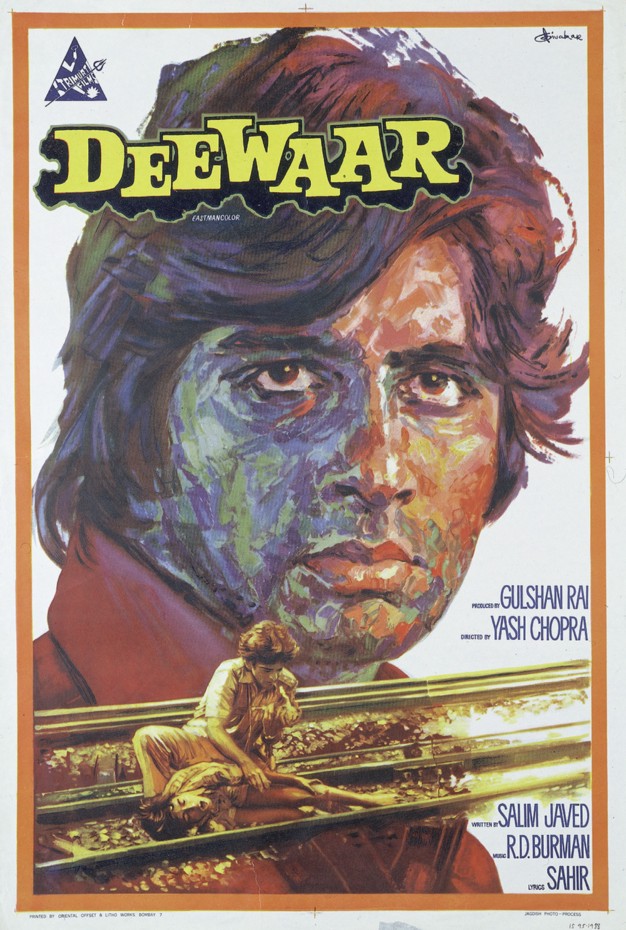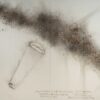Fans of Indian cinema or Bollywood will no doubt be familiar with the stunning imagery that has traditionally been created for Bollywood posters. Here we take a look at the history of the art form and look at some notable posters and artists.
Hand-painted film posters still hold a fascination for Indian film lovers, galleries and museums throughout India and much of the Indian subcontinent. The use of vibrant colours, artistic talent and Bold typography go hand in hand with the actual films themselves.
Talented, self-taught Bollywood poster artists of the past are credited with inventing the art of designing cinema posters completely by hand. Legendary Indian artists gave meaning to Indian cinema through their talent and imagination. Drawing their vision on canvas with brilliant and perfect use of colour strokes and fine sketches.
The artists who created these posters quickly became famous, instrumental in creating a buzz among the general public for a film, so it’s no surprise that producers were keen to pay anything to the right artist, knowing it could make a significant difference to the takings at the box office. Some of these artists went on to have fine art careers and their work is still studied today throughout India.
Artists attempted to capture the mood, tone plot of a film along with the personalities of the leading characters. This was often achieved through the use of colour with pinks and reds associated with the leading actors and blue and grey shades for the villains.
Bollywood film posters continued to be hand-painted into the 1970s when cut and paste techniques started to gain popularity. Essentially the leading actors would be photographed, cut and pasted onto a hand-painted background. This negated much of the talent of the earlier artists especially in terms of artistically interpreting the lead characters. By the 1980s this cut and paste technique had almost completely taken over and there was less need for the hand painting artists of before.
In terms of materials, the posters tended to be printed on low-quality papers and printed in huge numbers either lithographically or offset. The posters were then sent to distribution centres, theatres and publicity agencies. The posters were then pasted everywhere and anywhere they could find space to promote the film. It wasn’t until the 80s when government restrictions were put in place to regulate outdoor advertising.

Kalyan Khajina
Probably the earliest Bollywood film poster is for a Marathi film from 1924 called Kalyan Khajina. The story of emperor Shivaji who meets the Subedar of Kalyan (Bhave) and discovers Sultana emerging from a crate of treasure. Directed by Barubao, it’s understood he also design the poster and painted it.




Sant Sakhu
A 1941 film directed by Vishnupant Govind Damle, Sheikh Fattelal and Raja Nene. The poster was painted by Ravi Verma whose fascination for gods and mortals was seen in the poster. Verma had a great impact on early cinema arts. A celebrated India Painter and artist and a portrait painter of the royals.




Naukri 1955
Bimal Roy’s film documenting the struggles of young people looking for employment and the differences between rural and urban India. The very graphic poster has a wonderful sense of tension and the stark graphic figure in front of an urban city creates a bold visual representation of the film and its ideas. Naukri translates as ‘job’ in English.




Mother India
Indian cinema’s most legendary movie, ‘Mother India’ is a classical blend of drama, emotions, sacrifice, art, and love. Directed by Mehboob Khan in 1957 with a starstudded cast Nargis, Sunil Dutt, Rajendra Kumar, and Raj Kumar.
Painted by B. M Gupta, Mother India is considered as the ultimate tribute to Indian womanhood.
With notes of Soviet imagery, the Mother India poster stands out as one of the most enduring images in Bollywood cinema. It’s recognised by almost anyone who is interested in Indian cinema.
B.M Gupta created hundreds of posters during his career with Mother India and Pakeezah being two of his more famous both of which have become permanent exhibits in the Mumbai Film Museum.




Hathi Mere Sathi
Akhtar Sheikh is remembered for some of his grand posters. Films such as Kinare Kinare, Jugnoo, Hathi Mere Sathi.








Mughal–E-Azam
Mughal-E-Azam was a huge success in its time (1960). A masterful historical drama based on the love of a Mughal Prince and a court dancer. The love story turns into a war between father and son. Its posters were made by several painters, including Sheikh Abdul Rehman (better known as S.Rehman) and Akhtar Sheikh.




Waqt
S Rehman also produced this poster for Yash Chopra’s Waqt. The story of a family seperated by natural disaster who later find their lives reuniting.
Diwarkar Karkare
A veteran of the industry and well known for his Yash Chopra movies and depiction of Amitabh Bachchan at the “Angry Young Man”












Trained at the renowned JJ School of Art in Mumbai he is possibly India’s greatest poster artist and designer.




Iconic Bollywood Posters
Indian Bollywood posters continue to be a hugely important part of cinematic tradition even if its older methods have been replaced, they will remain iconic as the images are in some ways as important as the films themselves. Designer Karthik Ramachandran, says in the Hindustan Times, “We are breaking the clutter. The poster is the main communication between the audience and the film. We are trying to tickle the right emotion with new ideas.”
From darkly graphic and strong to romantic and colourful, these Indian artists deserve their rich place in history and the hearts of Bollywood fans the world over.




